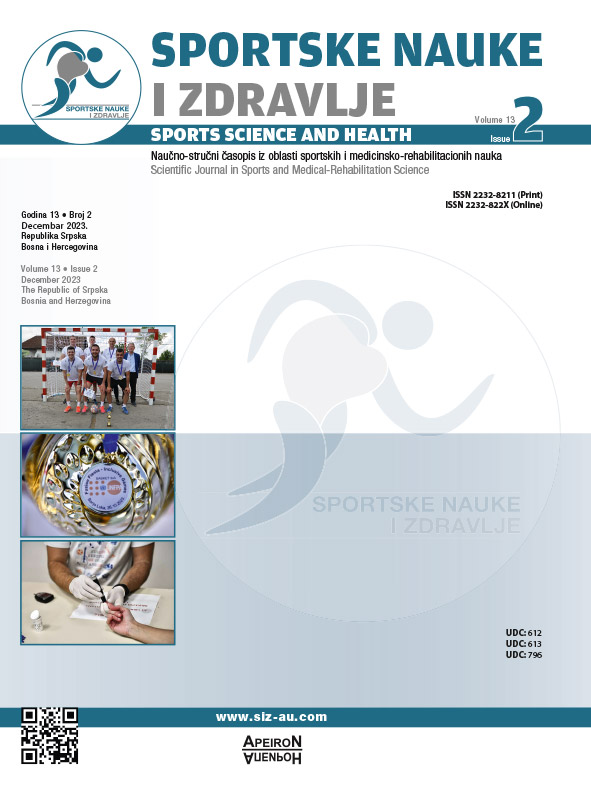The relationship between the quality of life and cardiorespiratory fitness
DOI:
https://doi.org/10.7251/SSH2302208BAbstract
Low levels of cardiorespiratory fitness and physical fitness have a negative impact on the health of children and adolescents. The aim of the study is to determine the relationship between the quality of life and cardiorespiratory fitness in elementary school students. The study involved 651 4th grade elementary school students in the Republic of Croatia. The average age of the students was 10.38 ± 0.50 years. Their body height was measured with a height metre (Seca® 213, Hamburg, Germany) and body mass, body mass index (BMI), and adipose tissue (%) with a dual-frequency body composition analyser (TANITA DC -360P). Cardiorespiratory fitness was determined by a multistage 20-metre run test (20MSRT Shuttle Run Test). The quality of life was assessed by a questionnaire for children and adolescents aged 8 to 18 years (KIDSCREEN-10). The results show that students perceived their quality of life as relatively high (4.33) and that the values of maximal oxygen uptake (VO2max) were 45.16 mL/kg/min. The results of a simple regression analysis show that there is a statistically significant relationship (p=0.00) between the quality of life and cardiorespiratory fitness in elementary school students. The results obtained in this research should serve as a stimulus for future researches concerning the relationship of cardiorespiratory fitness, physical activity and quality of life. Raising the level of cardiorespiratory fitness together with a healthy diet should encourage the development of intervention school programs which would considerably improve the overall health of children and adolescents.
